Is Berlin worth visiting? 10 reasons why you should
The big question, is Berlin worth visiting while you’re holidaying in Germany? You’ve heard that it can be boring and there isn’t much to see, read on and let me see if I can turn those false perceptions around!
Berlin is absolutely worth visiting to get a taste of the many eclectic, cultural hubs hiding in Germany’s capital, not to mention the storied history of the city itself.
There’s nowhere else in Germany with even a similar vibe to the capital, forged through its tumultuous history and tenacious residents.
Visiting Berlin is essential to get an understanding of what it was like during the long years that Berlin was literally and figuratively divided by the Berlin Wall and what life in Germany was like behind the Iron Curtain in the DDR.
These days, the capital boasts a vibrant multicultural foodie scene, heaving nightclubs hiding out in abandoned factories and quirky vintage markets, all jumbled up together.
Read on for my recommendations on the best things to do in Berlin after spending four days there, sampling the finest that Berlin has to offer.
Don your leather jacket and grab your camera, it’s time to explore the best places on these bustling streets like a Berliner!

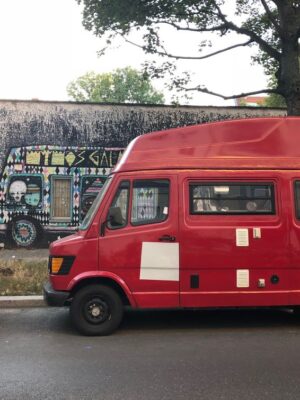
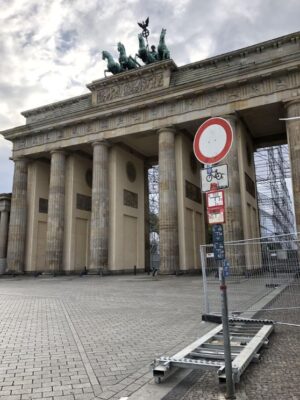
Disclosure: This post may contain affiliate links, which means that if you book through them, I may get a small commission at no extra cost to you. This really helps me continue to make free, detailed travel content for you and I promise that I only partner with companies that I personally use and love.
What is the best time of year to visit Berlin?
The German capital has plenty on offer all year round, with a healthy dose of museums, cathedrals and restaurants to keep you occupied during the cooler months.
And come late November, you can even enjoy traditional Christmas markets here, mulled wine and homemade Christmas tree decorations abound.
Once the weather warms up, beer gardens sprout along the banks of the Spree and out in Berlin’s green spaces, ready for visitors to enjoy an icy Radler (beer mixed with lemon soda) in a deckchair.
My recommendation for the best time to visit is either September to October when temperatures begin to drop and crowds return to more gentle levels compared to the hustle of the summer peak.
The average day time temperature is 19°C/66°F in September. Plus, you can enjoy the autumn colours on Unter den Linden walking to the Brandenburg Gate.
Alternatively, April to May is when temperatures are warming up but visitor numbers remain lower, flowers blossom throughout Berlin’s green spaces.
The average temperatures range from 9°C/48°F in April to 19°C/66°F in May, so don’t forget to bring your warm jacket with you!
Wondering where to visit in the cooler months? Try this winter guide to Nuremberg!
What is the best way to get around Berlin?
The best way to get around the bustling streets of Berlin is with the city’s excellent public transportation system.
You can easily reach the city centre from any of the outer suburbs via underground or above ground transport, tickets are easily purchased online.
Check out the BVG Ticket-App and BVG Fahrinfo-App to grab your tickets and all the timetable information for public transport in Berlin.
You can purchase physical tickets at railway and underground stations but you must validate your ticket by stamping it in the large red boxes, otherwise the ticket is invalid and you could be fined by a ticket inspector.
Online tickets are pre-validated and you’ll simply show your tickets to the inspector on the app if required.
So, is Berlin worth visiting? Here are 10 reasons why you need to add the capital city of Germany to your list of must-see places in Western Europe
1. Experience a city with one of the richest histories in Germany
While Berlin might not have the beautiful architecture and charming old towns that are so common in other German cities, that is exactly what makes the city so fascinating.
During WWII, the city was severely bombarded and was even the site of a major battle between what remained of the German defenders and Soviet forces.
After the Second World War, the city was divided into four sections: the American, British, French and Soviet sectors.
With totally different approaches to restoration and a city divided by the Berlin Wall, most of the old buildings were simply destroyed completely, rather than attempt reconstruction.
And so, the metropolis has a totally different feel to that of cities like Munich, where many of the charming old-world buildings were faithfully reconstructed brick by brick to look just as they did before the war.
You can see traces of so many aspects of Berlin’s rich history as you wander through the wide, tree-lined boulevard of Unter den Linden and pass the ornate Opera House on your way to the towering Brandenburg Gate.
In Alexanderplatz, the futuristic TV tower soars to the sky and demonstrates the Berlin of the 20th century reestablishing itself on the world stage.
And over in former East Berlin, huge, Stalinist style office buildings lean over the citizens below.
What Berlin lacks in “Old-Europe” sights, it more than makes up for with its multi-layered history.
If it’s your first time visiting the capital, I’ve got the best Berlin 3 day itinerary for you over here!
2. See the world-famous Brandenburg gate and renowned Reichstag building
At the end of the famous promenade of Unter den Linden, you will find the elegant Brandenburg Gate, inspired by the Pantheon in Athens and a symbol of the city.
Its enormous portals frame the view beyond into the green spaces of the Tiergarten, which houses the Berlin Zoo and covers over 5 square kilometers of parkland.
The four horses on top of the gate, referred to as a quadriga, are a replica of the originals who once stood there, Napoleon even took them with him back to Paris after defeating Prussia in the 1800s.
They lead a chariot with the goddess Victory, demonstrating Germany’s progress through the centuries.
During WWII, the gate was partially damaged, bulletholes and shrapnel marred the elegant columns and were visible for years afterwards.
After the conflict, the gate stood in East Berlin and visitors were kept at a distance until the fall of the Berlin Wall in 1989.
Today, the gate is a symbol of German reunification and a proud landmark in the city, the area around the gate is a pedestrian only zone so you’ll be able to get the best angles for your perfect postcard shot.
Top tip: Visit in the early morning for the best views of the Brandenburg Gate with minimal other visitors, entry is free.
A block further north, you’ll find the imposing Reichstag building, the scene of many of Berlin’s most important moments.
The home of the German Empire and the Weimar Republic after that, the grand building was completed in 1894.
Gutted by fire in 1933, perceived as a protest to the new Nazi government of Germany, it was mostly bricked up and used as a makeshift hospital in World War II.
It was heavily damaged during the Battle of Berlin by Soviet forces retaking the city and lay essentially abandoned in West Berlin during the Cold War.
Debate raged back and forth about the fate of the neoclassical complex while the West German government held parliament in Bonn.
Luckily for us visitors, it was decided to restore the building and after Germany became whole again, the federal government also returned to the Reichstag building.
Now topped with a stunning glass dome, anyone can book in to climb up and enjoy panoramic views back over the city’s landmarks and out over the green spaces of Tiergarten.
The main debate chamber of parliament is also visible from the dome in a deliberate statement on the transparency of the government to its people, a special feature carefully included in the design.
Don’t forget to bring photo ID with you so you can register to enter, book ahead online to ensure your spot and bring your camera for those 360° views over Berlin.
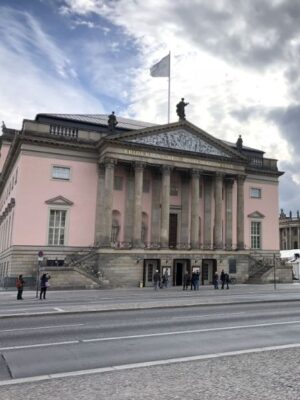
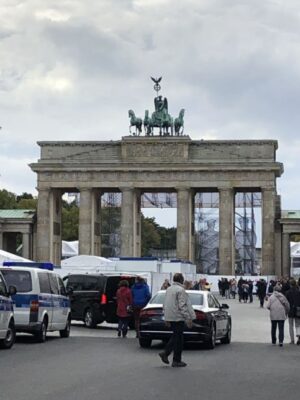
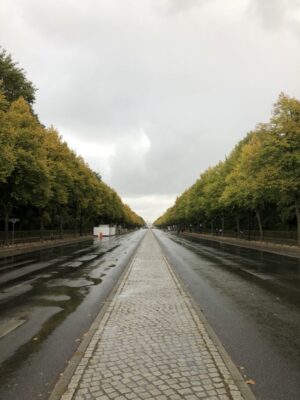
3. See the majestic Museum Island, home to 5 museums and a UNESCO World Heritage Site
The Museum Island Complex stands out in the middle of the Spree River, hosting 5 world-class museums and 1 art gallery on its fabled shores in the city center.
UNESCO listed for the outstanding integration of architecture, location and art, the museums were actually designed for the collections of art and artefacts that you’ll be able to discover inside.
From soaring Babylonian gates to treasured Renaissance art, there’s something for everyone nestled inside the impressive collections housed here.
The Altes Museum, with its impressive colonnaded façade, faces the Lustgarten lawns and has artefacts dating back to antiquity, including an awe-inspiring Greek collection.
The Neues Museum, practically reduced to rubble in WWII, holds Egyptian artworks and prehistoric artefacts.
You’ll find the rounded Bode Museum at the tip of Museum Island, holding large sculpture and Byzantine collections.
While at the Alte Nationalgalerie, you can admire some of the finest paintings in Germany.
Perhaps the most popular museum on the island is the Pergamon Museum, home to the incredible Ishtar Gate and Pergamon Altar.
Unfortunately, the Pergamon Gallery is currently closed to the public until mid 2027, to allow for extensive refurbishment and regeneration of its priceless collection.
You can still admire a virtual reconstruction of the Pergamon Altar at “Pergamon. Das Panorama” just over the Spree, complete with artistic renderings of its former glory and a limited collection of classic Greek statues, entry is 12€ per adult.
If you’re planning to visit multiple museums on the island, you’ll find the best value is to purchase a Museum Island ticket for 19€ per adult, inclusive of entry into the Panorama.
If it’s stunning museums and classical art you’re after, you can’t miss visiting Berlin.
4. Come to see the stunning Berlin Cathedral, bordered by the gentle Spree River
The Berlin Cathedral, or Berliner Dom, was originally part of a royal palace complex but was extensively rebuilt into the early 20th century to its current design, made to compete with St Paul’s Cathedral in London.
Topped with an impressive copper dome, this Protestant cathedral was badly damaged in the war and was left largely disused until restoration began in the 1970s, when it was still located in East Berlin.
Today, you can visit and take in the stunningly ornate interior, complete with golden accented reliefs and impressive onyx altar.
You can even climb to the top of the dome to enjoy views out over the city centre.
A great place to enjoy the view is from the Spree beer garden – open in the warmer months.
The Lustgarten lawns in front of the Altes Museum are also a popular picnic spot when the sun is shining.
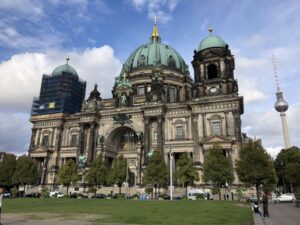
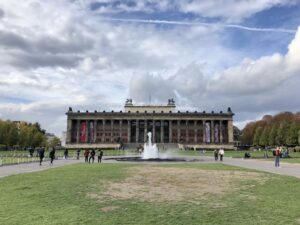
5. Come for a sombre retelling of the tragic chapters of Germany’s darkest days
Berlin doesn’t shy away from the sober retelling of the horrors that were committed during the 1930’s and 1940’s in Germany.
The poignant Memorial to the Murdered Jews of Europe, a Holocaust memorial, covers an entire city block with enormous stone blocks of differing heights.
Wandering between the pillars is meant to evoke a small portion of the fear and unease experienced by the persecuted Jewish populations, along with other minority groups, during the horror-filled years of Nazi era Germany.
Beneath the parallel blocks, a large exhibition catalogs some of the personal stories and tragedies behind the victims of the Holocaust.
Including farewell letters and individual belongings, the collection seeks to put human faces to the unimaginable suffering and devastation of the Shoah.
You can also book a guided tour with advance notice.
The Topography of Terror is a museum and documentation centre dedicated to the remembrance and details of the atrocities of the former Nazi regime, standing on the former site of the Nazi Command Centre.
Located southwest of Potsdamer Platz, the specially designed space displays harrowing exhibitions across five different locations, demonstrating the far-reaching powers of the Gestapo and SS factions.
The complex also has a large section of the Berlin Wall still standing within it, separate to the exhibition.
The permanent collection has informational signage throughout in both German and English, entry is free for all.
Don’t miss the outdoor sections, with diagrams and more information on the locations of the headquarters of the individual factions, as they stood during the war.
6. Experience the remnants of the Berlin Wall and former East Berlin
Not so long ago, Berlin was divided by a giant concrete wall and barbed wire, along with armed guards with instructions to shoot those trying to cross the border illegally.
The Berlin Wall stood to divide the socialist Soviet sector (East Berlin) from the capitalist Western sectors, put up to stop desperate East Berlin residents from attempting to cross back into the egalitarian West.
The totalitarian regime in East Berlin controlled every aspect of their residents’ lives and it wasn’t uncommon to have phone lines and houses bugged if someone was suspected to be an enemy of the state.
The state security police, or “Stasi”, as they were known, were omnipresent, with neighbours rewarded for providing tips on people receiving goods from the West. Or being suspected of attempting to escape.
The Berlin Wall divided the city from 1961 until 1989, when it fell amidst massive democratic protests. The fall of the Berlin Wall accelerated the end of the Cold War and led to the long overdue reunification of Germany.
Sections of the Wall are still scattered around the city, paying testament to the long years that families and loved ones were separated from one another.
You’ll find the longest section over in former East Berlin, at the East Side Gallery.
This 1300 metre long section is home to over 100 politically themed murals painted from 1989-1990, painted by 11 artists from around the world.
Don’t miss the two most popular panels as you stroll along the banks of the Spree River, the Fraternal Kiss and the Trabant figuratively breaking through the wall.
Forming the longest open air art gallery in the world, admission to the murals is free, come early in the morning if you’d like the popular panels all to yourself.
The Berlin Wall Memorial is a sober memoriam to those who lost their lives attempting to cross over to the other side, over 140 people are known to have died but many more are likely to have perished and were undocumented.
The memorial stands on Bernauerstraβe in the form of a large, preserved section of the Wall, combined with the Chapel of Reconciliation, as a remembrance to the years of Communist brutality and loss of human life.
The outdoor exhibition does a brilliant job of telling the story of the long Cold War years, filled with stories of escape tunnels and the displacement of ordinary residents who literally had their lives upended by the construction of the wall.
Head over to the Information and Documentation Centres to learn more about the daily lives of those on both sides of the wall, only separated by a border zone and concrete but at the same time, worlds apart. This is a part of Berlin’s history that cannot be missed.
Top tip: If you like to know more about former East Berlin, visit the excellent DDR museum for an up close and personal look at all aspects of daily life for Berliners in East Germany. You’ll find it across the river from the Berlin Cathedral.
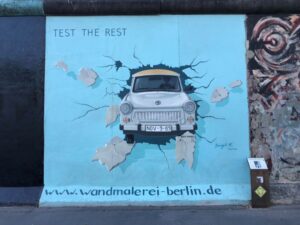

7. Head out to the vibrant neighbourhood of Friedrichshain for flea markets and street art
While you’re out at the East Side Gallery, don’t miss the opportunity to stop by independent Friedrichshain.
Once a working class suburb in East Berlin, today, the abandoned warehouses have been converted into pumping nightclubs and trendy cafes serving up brunch.
On weekends, vintage flea markets dot Boxhagener Platz and the Urban Spree spaces with impressive collections of old-school clothing and Soviet military pins.
You’ll find off-beat cinemas showing indie flicks to the cool kids off Karl-Marx-Allee in an impressive juxtaposition of Old and New Berlin combined.
Don your leather jacket and pick up an iced matcha latte if you’d really like to fit in with the crowd, BYO tiny sunglasses and interesting fashion sense.
If you’re hungry, F-hain is certain to have a restaurant serving whatever you’re looking for, playing host to a delicious multicultural food scene.
Don’t forget your camera and go wandering the streets, looking for your new favourite mural.
8. Meet futuristic new Berlin at Potsdamer Platz
Upon stepping into the colossal Potsdamer Platz, practically surrounded by skyscrapers, it’s hard to imagine that this was once a wasteland on either side of the Berlin Wall.
Before WWII, Potsdamer Platz was one of the busiest intersections in mainland Europe. You might spy the curious old traffic light as you enter the square and wonder how anyone ever managed to see it as they passed through the intersection.
Now, the square has been transformed into a glistening chorus of metal and concrete, save for a few remaining chunks of the wall left as a memorial to the square’s past.
The towering Sony Centre is easily spotted by its canopy stretching out into the square, little ones will love the changing light displays.
A short stroll away from Potsdamer Platz and its steel monoliths, you’ll find a curious reconstruction of the infamous Checkpoint Charlie.
While I can’t say that this is an essential stop for your Berlin itinerary, it is certainly popular for a quick photo shoot – keep in mind that a picture with the guards dressed up in uniform will come with a cost.
This was once the location of the border crossing from West to East Berlin, complete with tanks, barbed wire and armed soldiers.
Thankfully, these days, no one is scrutinising your passport or questioning you about why you want to cross the border, and the guns here are only toys.
There are also souvenir shops here practically wall to wall so if you’re wondering where you’ll find a Berlin Wall themed t-shirt, this is probably the place.
This is a popular spot for tour groups so you may find plenty of other visitors getting their souvenirs photos in.
9. Take in Berlin’s tallest building over at Alexanderplatz
Alexanderplatz is home to Berlin’s famous TV Tower, aka the tallest building in Berlin at over 368m.
There’s even a revolving restaurant housed in the bulbous section, slowly turning through 360° as you enjoy fine cuisine at the top.
If you’d like to eat at one of the more famous tables in Berlin, make sure to make your reservations months in advance.
There is also the option to go up to visit the observation deck, though I think the view of Berlin is more impressive when it includes the Fernsehturm.
The Park Inn by Radisson Berlin on the other side of the square boasts an impressive view over the tower from the 40th floor but it does come with a cost of 6€ to visit the observation deck, visit at sunset for the best lighting of the tower.
Enquire at the front desk for entry and instructions on how to reach the observation deck.
You’ll also find the elegant Marienkirche and Neptune’s Fountain in this popular square, remnants of Berlin’s elegant past.
Don’t miss the impressive Rotes Rathaus – named for its red brick construction – and charming pastel-coloured Nikolaiviertel nearby.
The merchants’ houses were all reconstructed to look as authentic as possible and the winding streets are home to tranquil cafes and cute boutiques, without the crowds that find Alexanderplatz.
Looking for more adorable houses? This walking tour of Bamberg is ready and waiting

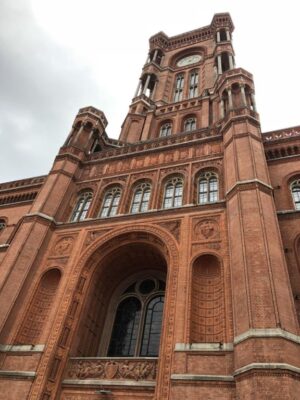

10. Party the night away at Berlin’s world famous clubbing scene
You’ve no doubt heard about Berlin’s vibrant nightclub scene, there are oodles of renovated warehouses and power stations to get your techno fix in.
The most famous nightclub is Berghain, or perhaps infamous for the bouncers turning away anyone they don’t think fits the secret dress code and strict no phone policy.
However, it’s not just the all-black uniform (preferably with a splash of leather) that makes the Berlin nightlife a bit of a challenge.
No self-respecting Berliner would dream of going out before 1am at the earliest and at many clubs, it doesn’t get busy before 2-3am.
Then you stay until the sun comes up or later.
So, if you’re a granny like me, you might want to schedule a pre-club nap or aim for one of the more lowkey clubs which open earlier in the night.
Try Sisyphos, Club der Visionaere or Birgit for some fun and less intense options that open earlier!
Unfortunately, some clubs allow smoking/vaping inside or don’t actively stop patrons from lighting up, so aim for a spot with outside space to limit your secondhand smoke exposure. I headed straight for a laundry after my Berlin clubbing experience to rinse off the ashtray smell.
So, is Berlin worth visiting?
We’ve wandered through the eclectic streets of Friedrichshain and marveled at the soaring TV Tower, browsed flea markets and taste-tested the multicultural food scene.
And I hope, convinced you that Berlin is not only worth visiting but a must see if you’re planning a trip to Germany.
It is truly a unique place shaped by its tumultuous history, where else can you get up close and personal with a city’s backstory, like you can with Berlin?
I hope you’ve enjoyed this guide on 10 reasons why you should visit Berlin.
Let me know in the comments below what you’ll be visiting first!
Wondering where else to visit in Germany? Why not head down to Munich next?

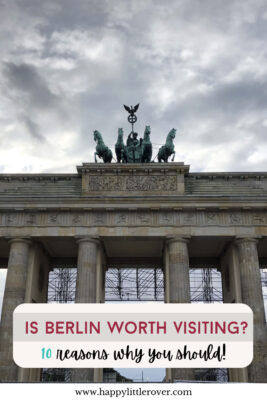
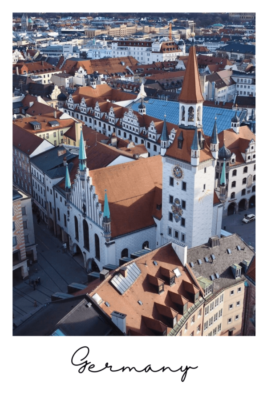





1 Comment
Join the discussion and tell us your opinion.
Berlin is such a vibrant city! I loved visiting in the winter for the Christmas markets.